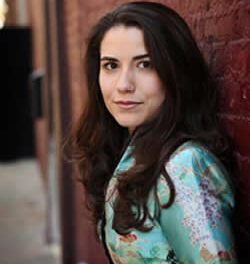The 2002 edition of the NC Symphony’s New Year’s Eve off-series gala concert under the baton of Associate Conductor William Henry Curry departed from the routine that the area has become accustomed to during previous seasons under Gerhardt Zimmermann’s baton. The routine is what seems to be the standard procedure with many American orchestras, namely to replicate and imitate the traditional Viennese program, heavy on the Strauss family and Léhar. Curry chose to offer a more innovative program of primarily American music, some of it heir of the Viennese tradition albeit, but with its own distinctive characteristics and flavors.
The evening opened with Irish-American cellist and operetta composer Victor Herbert’s rousing “Festival March,” a work in the American Band tradition that heavily quotes “Auld Lang Syne.” The brass tended to overpower the strings, which seemed not to be in their full forces for the performance, especially in the opening and closing segments. Next up was German-American composer Erich Wolfgang Korngold’s Straussiana , in which he quotes and imitates the works, techniques, rhythms and style of Johann Strauss, Jr., with his own distinctive touch – an elegant, tuneful piece that is in no way a pastiche. This was followed by a nod to the past tradition with three works by Strauss himself: the Overture to Die Zigeunerbaron, the “Tik Tak” polka from Die Fledermaus , and the “Rosen aus dem Suden” waltz, Op. 388. Curry and the musicians made these tired old chestnuts seem fresh an new, giving delicious performances that elicited the enthusiastic audience’s immediate applause after each one, printed and announced grouping notwithstanding. Another Herbert piece closed the first half, a U.S. concert première of his “Royal Sec: A Champagne Galop,” an unpublished work composed when he was a cellist in the Vienna Symphony and whose original manuscript was unearthed and prepared for this performance. This reviewer thought immediately of another famous cellist and operetta composer who wrote several famous galops: Jacques Offenbach. This work was equally bubbly, in honor of the brand of bubbly whose name provided the work’s title.
Korngold’s Overture to The Sea Hawk, a 1940 film whose score was nominated for an Oscar but lost out to Pinocchio , began the second half. Korngold was one of the Jewish composers who fled the Nazis and was able (some weren’t) to make a new life and career in America in Hollywood scoring films, and he did win some Oscars. We stayed on the West Coast for the next work, Robert Russell Bennett’s Gershwin in Hollywood, his arrangement of tunes from Gershwin’s scores for three films. Bennett was Gershwin’s friend, arranger and orchestrator. Again the brass occasionally drowned out the strings, which nonetheless had some lush moments in the quieter segments of these two works. The final work on the printed program was Gershwin’s 1924 “Rhapsody in Blue” with Jeffrey Siegel at the keyboard for a superb, sensitive, and sensible rendition.
Curry persuaded Siegel to do two solo encores – Brahms’ Waltz, Op. 39/15, and Gershwin’s “I’ve Got Rhythm” – and then obliged the audience by leading the orchestra in a medley of four Irving Berlin songs (“Alexander’s Ragtime Band,” “Easter Parade,” “White Christmas,” and “God Bless America”) before the traditional concluding “Auld Lang Syne” with audience participation. The balloons did not all descend as planned, however.
Throughout the evening, Curry gave wonderful and entertaining oral commentary to compensate brilliantly for the absence of program notes, frequently injecting humor into the historical information. (There was even a stand-up comedy routine of sorts involving champagne before the “Royal Sec” galop.) Siegel did likewise for the Rhapsody. The selection and ordering of the works was clearly well thought out, logical and creating a natural flow. Changing colored lighting and projections of images (including clocks, champagne bottles, skyscrapers, light through leaves, etc.) on the wall behind the orchestra, all suited to the theme and/or mood of the individual work, added to the enjoyment of the evening that charmed the well-filled Meymandi Concert Hall.
This was a terrific performance. Our orchestra put forth some truly first rate playing, elicited by Curry’s clear, precise but very expressive conducting, which is enthusiastic and vigorous, yet discreet, without any unnecessary exaggeration or showy display, jumping up and down, or thrashing of arms. He pays great attention to detail to create the perfect rhythms, tempi, and moods for each piece and segment thereof. He’s not in the running for the post of Music Director and Conductor, but we hope the one who gets it is as good as he is. This reviewer was tired of the tried and true fare of the traditional New Year’s Eve gala and thrilled at the new turn this one took. May it be the beginning of a new tradition!
P.S. Readers may be interested in knowing that Lorin Maazel also broke with tradition for the NY Philharmonic’s New Year’s Eve concert, broadcast live on PBS at 8:00 p.m. while we were in Meymandi, by giving an all-Gershwin program.













